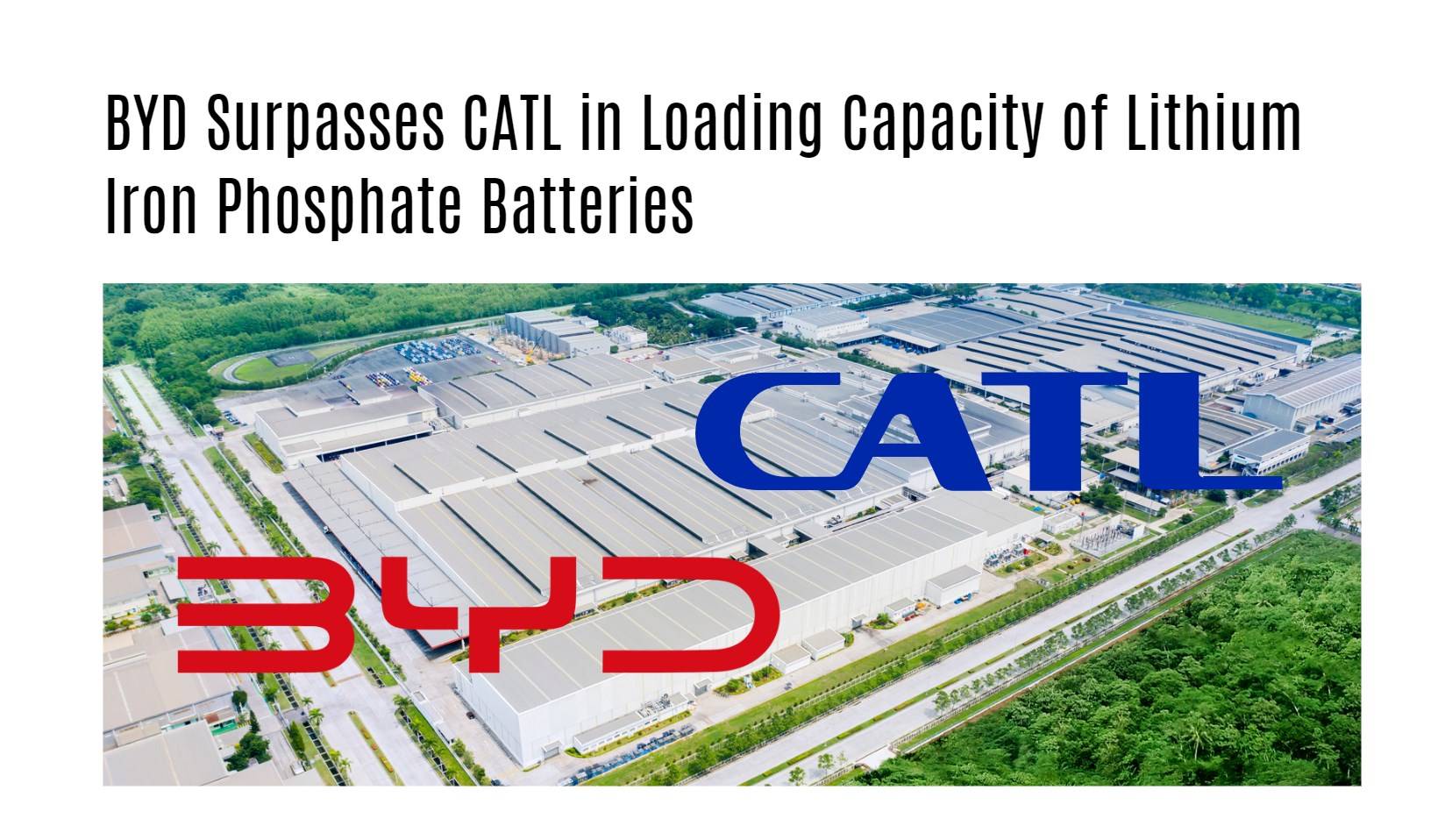BYD has recently made headlines by surpassing CATL in the loading capacity of lithium iron phosphate (LFP) batteries. This achievement is significant as it positions BYD as a strong competitor in the electric vehicle (EV) battery market, particularly in the affordable LFP segment. LFP batteries are known for their cost-effectiveness and safety, making them an increasingly popular choice among EV manufacturers.
How does BYD’s Blade Battery compare to CATL’s offerings?
BYD’s Blade Battery technology has played a crucial role in its success within the LFP market. The Blade Battery is designed to optimize space utilization, allowing for greater energy storage without significantly increasing battery size. In contrast, CATL’s latest Qilin battery technology also aims to enhance performance but has traditionally lagged behind BYD in market share for LFP batteries. Currently, BYD holds a significant market share in LFP batteries, giving it a competitive edge.
What advancements have been made in fast-charging technology?
Both BYD and CATL are at the forefront of fast-charging technology with their new battery models. BYD’s upcoming Blade Battery 2.0 and CATL’s Qilin Battery 2.0 support a 6C charging rate, enabling a full charge in just 10 minutes. This advancement could revolutionize the EV market by significantly reducing charging downtime, making electric vehicles more convenient for consumers.Chart: Charging Rates Comparison
| Battery Model | Charging Rate | Estimated Full Charge Time |
|---|---|---|
| BYD Blade Battery 2.0 | 6C | 10 minutes |
| CATL Qilin Battery 2.0 | 6C | 10 minutes |
| Zeekr 001 | 5C | 11.5 minutes |
Why is infrastructure important for fast-charging capabilities?
The introduction of high-speed charging batteries necessitates upgrades to existing charging infrastructure. Most current charging stations are not equipped to handle the power demands of 6C charging rates, which require at least 360 kW of power. Without sufficient infrastructure, the benefits of these advanced batteries cannot be fully realized, potentially limiting their adoption.
What are the implications of BYD’s rise in the battery market?
BYD’s rise in the LFP battery sector indicates a shift in the competitive landscape of EV batteries. As demand for affordable and efficient EVs grows, BYD’s ability to produce high-capacity LFP batteries positions it well to capture a larger share of the market. This trend is particularly significant given that LFP batteries accounted for a substantial portion of all batteries installed in vehicles recently.
Buy Wholesale Battery Tips
When considering purchasing lithium iron phosphate batteries wholesale, keep these tips in mind:
- Research Suppliers: Look for reputable manufacturers with proven track records.
- Understand Specifications: Ensure that the battery specifications meet your requirements for capacity and charging rates.
- Negotiate Terms: Don’t hesitate to negotiate pricing and delivery terms.
- Check Warranty and Support: Ensure that there is adequate warranty coverage and customer support available.
Industrial News
The electric vehicle industry is witnessing rapid advancements in battery technology:
- BYD Launches New Blade Battery: Expected to enhance energy density and reduce costs.
- CATL Unveils Shenxing Battery: Promising improved performance with a focus on safety and efficiency.
- Infrastructure Developments: Companies are investing in ultra-fast chargers capable of supporting new high-capacity batteries.
Redway Expert Views
Experts predict that the competition between BYD and CATL will drive innovation in battery technology:
- Increased Efficiency: The push for faster charging will lead to improvements in battery chemistry and design.
- Market Dynamics: As BYD continues to gain market share, CATL may need to adapt its strategies to maintain its position as a leader.
- Global Impact: The advancements made by these companies could set new standards for battery performance worldwide.
FAQs
- What are lithium iron phosphate batteries?
Lithium iron phosphate (LFP) batteries are rechargeable batteries known for their safety, long cycle life, and cost-effectiveness. They are increasingly used in electric vehicles due to their lower production costs compared to other lithium-ion technologies. - How does fast charging work?
Fast charging increases the current supplied to a battery beyond standard levels, allowing it to recharge more quickly. The “C” rating indicates how quickly a battery can be charged relative to its capacity; for example, a 6C rating means it can be charged six times its capacity within one hour. - What challenges do fast-charging technologies face?
The main challenges include the need for upgraded charging infrastructure capable of handling high power demands and managing heat generation during rapid charging cycles. - Why are LFP batteries becoming more popular?
LFP batteries are gaining popularity due to their lower cost compared to nickel-cobalt-manganese (NCM) batteries, combined with their safety features and sufficient energy density for many applications. - How does BYD plan to maintain its competitive edge?
BYD plans to continue innovating its battery technologies while expanding its manufacturing capabilities and optimizing supply chains to keep costs low.



